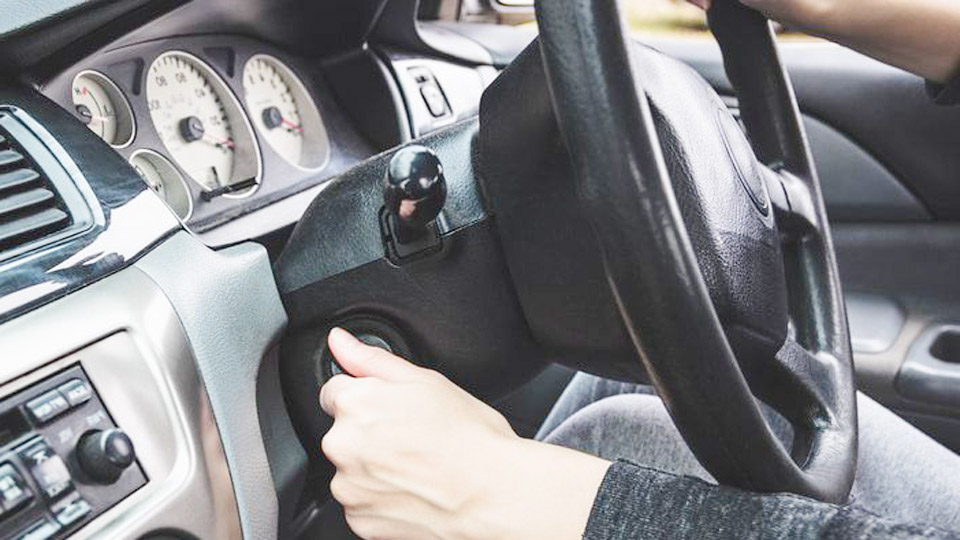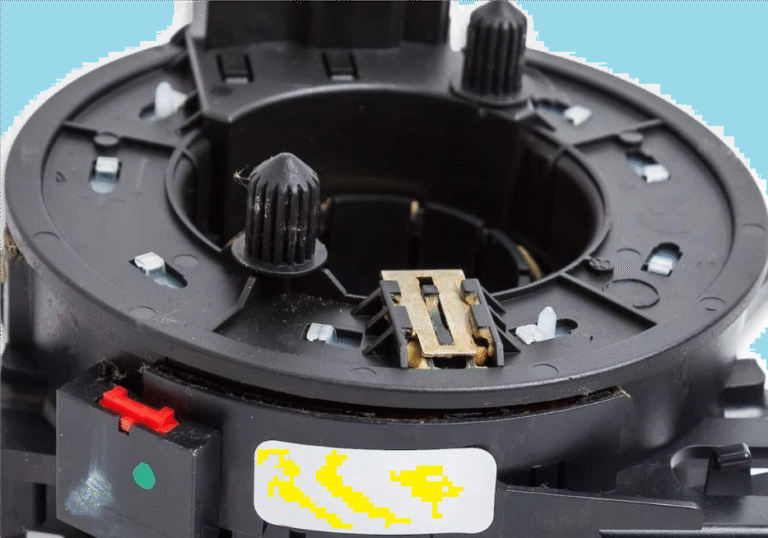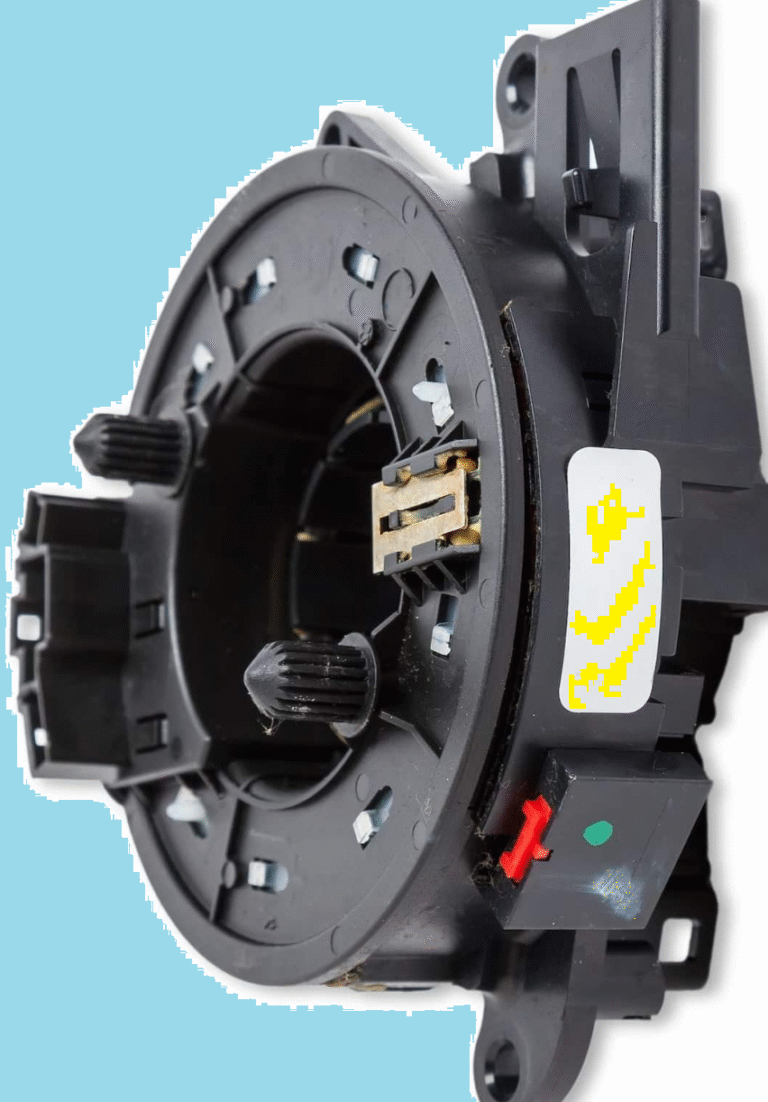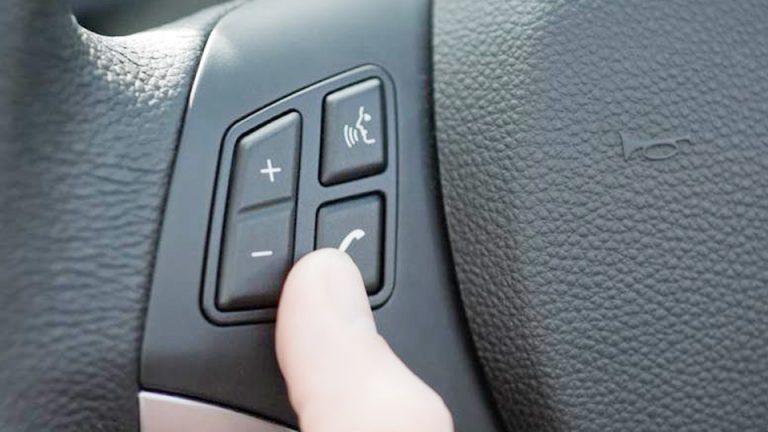The first time I heard a clicking noise when turning my old Subaru, I was pulling out of my driveway, late for work, and my heart sank. Why does my car make a clicking noise when I turn? It sounded like a rapid tick-tick-tick, and I imagined dollar signs piling up at the mechanic.
I’ve chased down this sound in my cars and helped friends do the same. It’s often not as scary as it seems, and I’m here to walk you through the causes, fixes, and my own experiences—like we’re troubleshooting together in my garage. Let’s figure out what’s going on with your car.

Image by firestonecompleteautocare
Understanding That Annoying Clicking Sound
A clicking noise when turning can feel alarming, but it’s usually a sign of a specific issue in your car’s steering or drivetrain. I’ve learned it’s rarely a “your car’s about to explode” problem, but ignoring it can lead to bigger issues.
The sound often comes from parts wearing out or lacking lubrication, and pinpointing the cause depends on when and where it happens. For me, it was a wake-up call to pay closer attention to my car’s maintenance.
Common Causes at a Glance
Clicking noises during turns typically point to issues with the CV joints, steering components, or suspension parts. My Subaru’s culprit was a worn CV joint, but I’ve seen other causes in friends’ cars, like loose wheel bearings or dry tie rods. Each cause has a distinct sound or pattern, which I’ll break down to help you narrow it down.
Why It Happens When Turning
Turning puts extra stress on your car’s front wheels, steering, and drivetrain. When I first heard the clicking in my Subaru, it only happened during sharp turns, like parking. That’s because components like CV joints flex more during turns, exposing wear. Understanding this helped me stay calm and methodical instead of panicking.
Usual Suspects: What’s Causing the Clicking?
Let’s dive into the most common reasons for that clicking noise. I’ve dealt with a few of these myself, and each has telltale signs to help you diagnose the issue.
Worn CV Joints
Constant Velocity (CV) joints are part of the axles in front-wheel-drive or all-wheel-drive cars, like my Subaru. They allow the wheels to turn while transferring power. When they wear out, they make a rhythmic clicking, especially during tight turns.
My first CV joint failure was obvious—sharp turns into my driveway caused a loud click-click-click. The rubber boot around the joint was torn, letting grease leak and dirt get in, which ruined it.
Why it matters: A bad CV joint can fail completely, leaving you stranded. I ignored mine for a week, and the clicking got louder until I replaced it. Checking the boot for tears or grease leaks is a good first step.
Failing Wheel Bearings
Wheel bearings let your wheels spin smoothly. When they wear out, they can cause a clicking or grinding noise, especially when turning. My buddy’s old Jeep had this issue—the clicking was softer but constant, and it got worse when cornering. We jacked up the car and wiggled the wheel; it felt loose, confirming the bearing was shot.
Why it matters: A failing bearing can cause wheel wobble or even detach, which is dangerous. If the clicking comes with a hum or grind, check the bearings pronto.
Loose or Worn Tie Rod Ends
Tie rod ends connect your steering to the wheels. If they’re loose or dry, they can click during turns. I helped a neighbor diagnose this on her sedan—the noise was a faint clunk or click when turning at low speeds. We found the tie rod end had play when we tugged on it.
Why it matters: Loose tie rods affect steering precision and safety. Ignoring them can lead to uneven tire wear or worse, loss of control. A quick inspection under the car can spot this.
Dry or Worn Ball Joints
Ball joints are pivot points in your suspension, and when they lose lubrication or wear out, they can click or pop during turns. I once had a truck with a faint clicking that only happened when turning into parking spots. Greasing the ball joints quieted it for a while, but eventually, I had to replace them.
Why it matters: Worn ball joints can cause suspension issues or even collapse, affecting handling. Regular maintenance, like greasing, can prevent this.
Debris or Damage in Wheel Area
Sometimes, the clicking isn’t mechanical. A rock stuck in your tire tread or a bent wheel cover can mimic a clicking sound. I once spent an hour troubleshooting a “clicking” noise on my wife’s car, only to find a pebble wedged in the tire. It was a relief but also a reminder to check the simple stuff first.
Why it matters: Debris is an easy fix, but ignoring it can damage tires or wheels. A quick visual check can save you time and worry.
How to Diagnose the Clicking Noise
Diagnosing the problem is half the battle. Here’s how I approach it, based on years of trial and error in my driveway.
Listen Closely to the Sound
Pay attention to when the noise happens. Is it only during sharp turns? Does it speed up with the car? My Subaru’s CV joint clicked faster as I turned tighter, which was a clue. Wheel bearings often hum or grind alongside clicking, while tie rods or ball joints might clunk at low speeds. Drive slowly in a parking lot and turn both ways to pinpoint it.
Inspect Visually
Pop the hood or jack up the car (safely, with stands!). Look at the CV joint boots for tears or grease leaks. Wiggle the wheels to check for bearing play. I use a flashlight to inspect tie rods and ball joints for looseness or rust. My first CV joint issue was obvious—a torn boot was spewing grease.
Test Drive with Purpose
Take a short drive and vary your turns—sharp, gentle, left, and right. I once narrowed down a tie rod issue by noticing the clicking only happened turning left. Note if the noise changes with speed or road conditions. This helps rule out debris or confirm a mechanical issue.
Fixing the Clicking Noise
Once you’ve got a suspect, it’s time to fix it. Here’s what I’ve done for each issue, with tips to keep it simple and safe.
Replacing a CV Joint
If the CV joint is bad, replacement is usually the only fix. I tackled this on my Subaru with a friend’s help. Jack up the car, remove the wheel, and unbolt the axle. Swap in a new or rebuilt axle (about $100-$200) and reassemble. It took me a Saturday, but shops charge $300-$500. If you’re not handy, a mechanic is worth it to avoid mistakes.
Why it matters: A new CV joint restores smooth power delivery and stops the noise. Ignoring it risks a broken axle, which I narrowly avoided.
Fixing Wheel Bearings
Wheel bearings need replacing if they’re loose or noisy. I helped my buddy with his Jeep—we removed the wheel, brake caliper, and hub, then pressed out the old bearing. New bearings cost $50-$150, but the job requires tools like a press. I’d recommend a shop unless you’re experienced, as it’s tricky.
Why it matters: A fresh bearing ensures safe wheel rotation. Driving on a bad one can cause serious damage or accidents.
Addressing Tie Rod Ends
Loose tie rods need tightening or replacing. I replaced one on my neighbor’s car for about $30 in parts. Jack up the car, remove the old tie rod end with a wrench, and install the new one. An alignment afterward is crucial—I skipped it once, and my tires wore unevenly.
Why it matters: Tight tie rods keep steering precise. Neglecting them can make your car wander or wear out tires fast.
Greasing Ball Joints
If ball joints are dry but not worn, greasing can help. I used a grease gun to lubricate my truck’s joints, which stopped the clicking for months. If they’re too worn, replace them ($20-$50 each). It’s a job for a shop if you’re not comfortable under the car.
Why it matters: Lubricated joints reduce wear and noise, extending suspension life. It’s a cheap fix if caught early.
Clearing Debris
For rocks or debris, inspect the tires and wheel wells. I used a screwdriver to pry out a pebble from my wife’s tire, and the noise stopped instantly. Check wheel covers too—bent ones can tap the wheel. A quick wash can dislodge hidden debris.
Why it matters: Removing debris is free and prevents tire or wheel damage. It’s the easiest fix to try first.
Comparison of Common Causes and Fixes
Here’s a table summarizing the causes I’ve encountered, their signs, and fixes. It’s helped me explain options to friends.
| Cause | Symptoms | Fix | Cost (DIY) | Difficulty |
|---|---|---|---|---|
| CV Joint | Clicking during sharp turns, torn boot | Replace axle | $100-$200 | Moderate |
| Wheel Bearing | Clicking with hum/grind, wheel play | Replace bearing | $50-$150 | Hard |
| Tie Rod End | Clunk/click at low speeds, loose | Tighten or replace | $20-$50 | Moderate |
| Ball Joint | Clicking when turning, dry or worn | Grease or replace | $20-$50 | Moderate |
| Debris in Wheel | Random clicking, no pattern | Remove debris | Free | Easy |
This table is my go-to for quick diagnosis and planning. Costs are approximate based on my experience buying parts locally.
Tips to Prevent Clicking Noises
Prevention saves time and money. Here’s what I do to keep my cars quiet.
Regular Maintenance
Check CV boots and grease suspension parts every oil change (every 5,000-7,500 miles). I caught a torn boot early on my truck, saving the joint. Regular inspections spot issues before they click.
Drive Smoothly
Avoid sharp, jerky turns, which stress CV joints and bearings. I used to whip my Subaru into parking spots, and I’m sure that didn’t help the CV joint’s lifespan. Smooth driving extends component life.
Clean Wheels Regularly
Wash your wheels to remove debris. I make it a habit monthly, which prevents rocks from sticking in tires or wheel wells. It’s a small step that avoids annoying noises.
Why I Tackle These Issues Myself
Diagnosing and fixing clicking noises has taught me so much about my cars. The first time I replaced a CV joint, I was nervous, but the satisfaction of silencing that noise was huge. It’s not just about saving money—though I’ve saved hundreds over the years—it’s about understanding your vehicle and feeling in control. Plus, it’s a great story to share over coffee.
Silence the Click and Drive with Confidence
A clicking noise when turning your car can be unnerving, but it’s often a straightforward fix. Whether it’s a worn CV joint, loose bearing, or a pebble in your tire, you can diagnose and solve it with patience and the right approach. I’ve been through this enough times to know it’s manageable, even for beginners.
Start with a visual check, listen carefully, and try the fixes I’ve shared. You’ll not only quiet the noise but also gain confidence in maintaining your car. Grab a flashlight, pop the hood, and get started—you’ve got this!
Frequently Asked Questions
What’s the most common reason my car clicks when I turn?
Worn CV joints are often the culprit, especially in front-wheel-drive cars. I’ve seen this in my Subaru and friends’ cars—sharp turns make a rhythmic clicking due to a damaged joint or torn boot.
Can I drive with a clicking noise when turning?
It depends. A pebble in the tire is harmless, but a bad CV joint or bearing can worsen and strand you. I drove a week with a clicking CV joint, but it got louder, so I fixed it fast.
How do I know if it’s a CV joint or something else?
Listen for a rhythmic click during tight turns, and check the CV boot for tears or grease. I diagnosed mine by inspecting under the car—torn boots are a dead giveaway.
Are clicking noises expensive to fix?
Costs vary. Debris removal is free, while CV joints cost $100-$200 to replace yourself. Bearings or tie rods run $20-$150. I’ve saved by doing simple fixes myself, but shops charge more.
How can I prevent clicking noises in the future?
Regular maintenance, like checking CV boots and greasing suspension parts, helps. I inspect my car every oil change and drive smoothly to reduce wear on joints and bearings.




